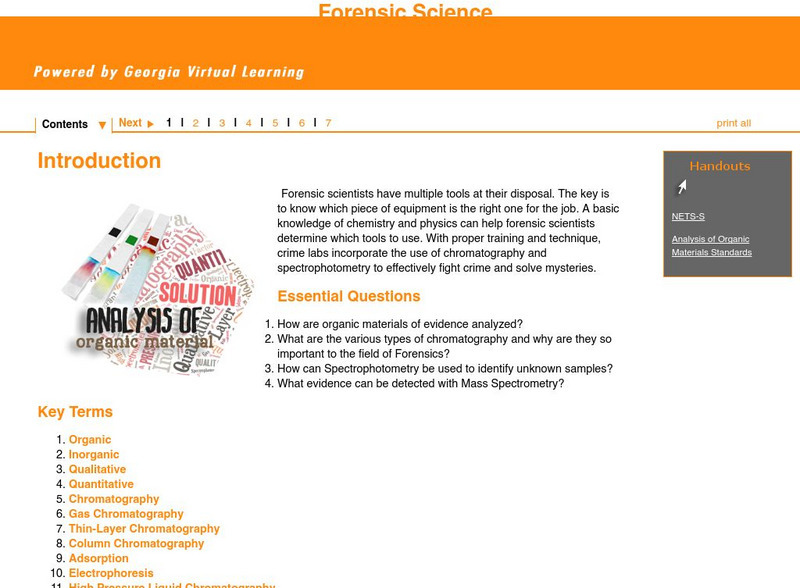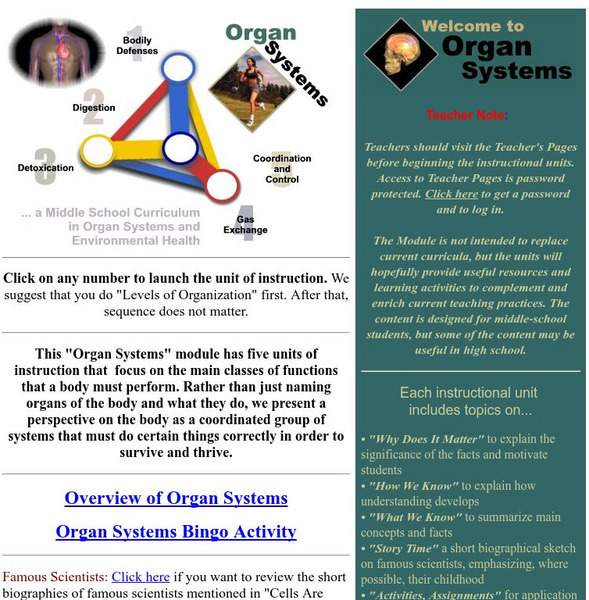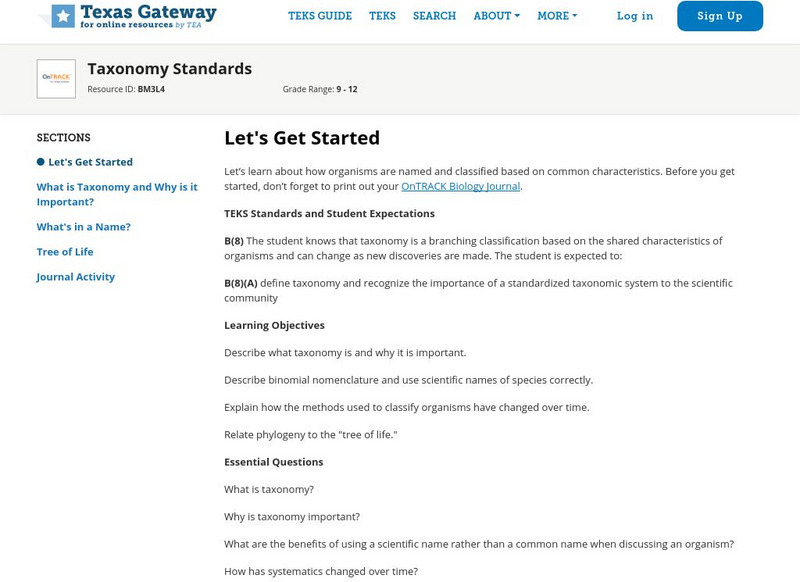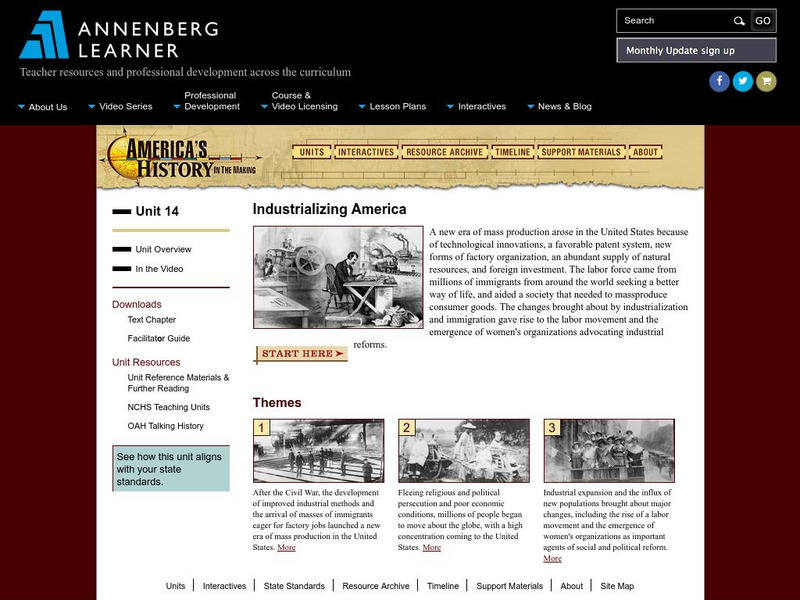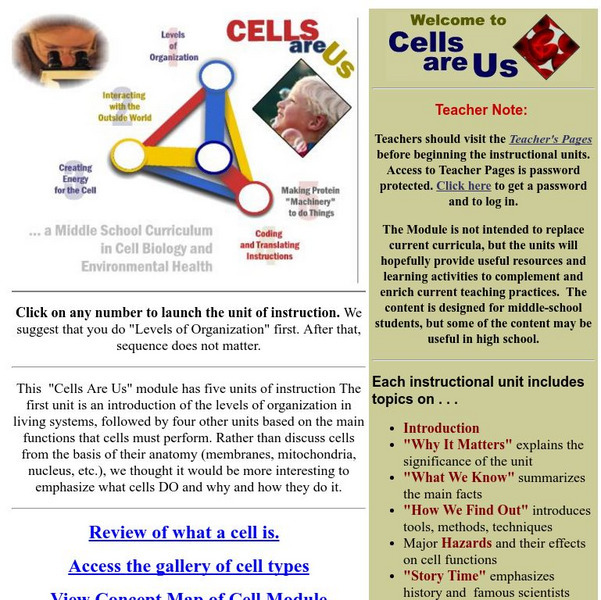Hi, what do you want to do?
Mind My Education
Mind My Education: The Life of Environments
This extensive lesson plan covers various topics about how animals interact with their environment. Topics include how animals sense their environment, how environments and organisms change together, and how animals use their senses to...
Annenberg Foundation
Annenberg Learner: Interactives: Periodic Table
Learn the basics of the Periodic Table including how the Periodic Table is organized and how to make sense of the information included in the table. Test your understanding with an interactive quiz at the end of the activity.
Texas Education Agency
Texas Gateway: Scientific Investigation and Reasoning Data Organization
Using interactive exercises, students will review how to construct tables and graphs in order to organize data.
Untamed Science
Untamed Science: Ecology: The Study of Interactions
Learn about how ecology is simply the study of how and why organisms interact with their environments.
Georgia Department of Education
Ga Virtual Learning: Analysis of Organic Materials Analysis of Organic Materialsv
This comprehensive interactive tutorial continues to explore the forensic science field. Learn how organic materials of evidence are analyzed and what the various types of chromatography are, especially why they are so important to this...
Texas A&M University
Peer Curricula: Organ Systems
This site gives five instructional units on organ systems: bodily defenses, digestion, detoxification, gas exchange, and coordination and control. Each unit is broken down into sections: "why does it matter," "how we know," "what we...
Curated OER
Kids Health: How the Body Works
A colorful, interactive site for kids and teens. A holistic approach to learning about your body, including topics such as feelings, drugs, injuries, and other health issues. Available in Spanish.
Vision Learning
Visionlearning: Biology: Galapagos Finches
Interactive animation illustrates how Charles Darwin used his study of finch beaks to explain evolution. A phylogenetic tree diagram shows how the birds' color and beak shape changed over generations.
TED Talks
Ted: Ted Ed: The Wild World of Carnivorous Plants
What exactly are carnivorous plants and how do they trap their prey? Kenny Coogan dives into the world of flesh-eating tricksters.
Texas Education Agency
Texas Gateway: Taxonomy Standards
What's in a name? Learn about how organisms are named and organized in this interactive tutorial.
Curated OER
Kids Health: How the Body Works Movies and Activities
Short, colorful movies explain each of the body's systems: skeletal, cardiovascular, digestive, urinary, respiratory, endocrine, skin, immune, muscular, and nervous. Once you've seen the movie, click on the Activity Page link for...
E Reading Worksheets
E Reading Worksheets: Text Structure Practice 1
This interactive worksheet provides 10 questions: each includes a reading passage which students read and select the patterns of organization used in each passage. RI.11-12.3 Text development
Georgia Department of Education
Ga Virtual Learning: Disease Process
In this comprehensive interactive tutorial you will study how your body is designed to fight off disease causing agents and what happens inside your body when you are actually sick. Additionally, you will learn how to organize...
The Association of the British Pharmaceutical Industry
Abpi: Population Growth
Students control the environments in four different scenarios to discover how any changes might affect populations. The different simulations include microorganisms, rabbits, foxes, and other organisms.
Annenberg Foundation
Annenberg Learner: America's History in the Making: Industrializing America
Comprehensive teaching unit that explores the "second industrial revolution" and the mass production of consumer goods. This, in turn, caused an increase in the labor force and immigration. Learn how these changes brought about the start...
Concord Consortium
Concord Consortium: Science of Atoms and Molecules: Nucleic Acids and Proteins
Through this activity, students work with macromolecules, proteins and nucleic acids. The focus is on the atomic structure of proteins, how linear polymers are made, and the surface charges of the resulting polymers. . Multiple-choice...
CK-12 Foundation
Ck 12: Life Science: Features of Populations
[Free Registration/Login may be required to access all resource tools.] A population is a group of organisms of the same species, all living in the same area and interacting with each other. Since they live together in one area, members...
CK-12 Foundation
Ck 12: Life Science: Habitat and Niche
[Free Registration/Login may be required to access all resource tools.] Are you on the basketball team? Are you a cheerleader? Do you play an instrument in the band? Your niche would be your role or place in the school. Organisms also...
CK-12 Foundation
Ck 12: Life Science: Fields in the Life Sciences
[Free Registration/Login may be required to access all resource tools.] The life sciences are the study of living organisms. They deal with every aspect of living organisms, from the biology of cells to the biology of individual...
Texas A&M University
Peer Curricula: Cells Are Us
Find five instructional units on cells: levels of organization, interacting with the outside world, creating energy for the cell, coding and translating instructions, and making protein "machinery" to do things. Each unit is broken down...
PBS
Pbs.org: Jumping on the Bitmoji Classroom Train
This blog focuses on the Bitmoji classroom craze that is spreading all across the nation. Creating an interactive virtual classroom has become one of the many ways educators are trying to create content for their online tutorials,...
National Institute of Educational Technologies and Teacher Training (Spain)
Ministerio De Educacion: La Dinamica De Los Ecosistemas
This unit shows how ecosystems change over time and how matter and energy, which are essential to its operation, are transformed and passed from one living thing to another forming, in some cases, authentic cycles. It contains 19...
CommonLit
Common Lit: Book Pairings: "World Without Fish" by Mark Kurlansky
Selected (8) reading passages (grades 6-10) to pair with "World Without Fish" by Mark Kurlansky. Mark Kurlansky discusses how humans treat the oceans and the fish that live in them, and what the world will likely look like if fish...
PBS
Pbs Teachers: The Real Dirt on Farmer John: Family Farms in America
Trace the evolution in American agriculture with this interactive timeline. Learn how the history of one small Illinois farm reflects the larger changes, decade by decade.








